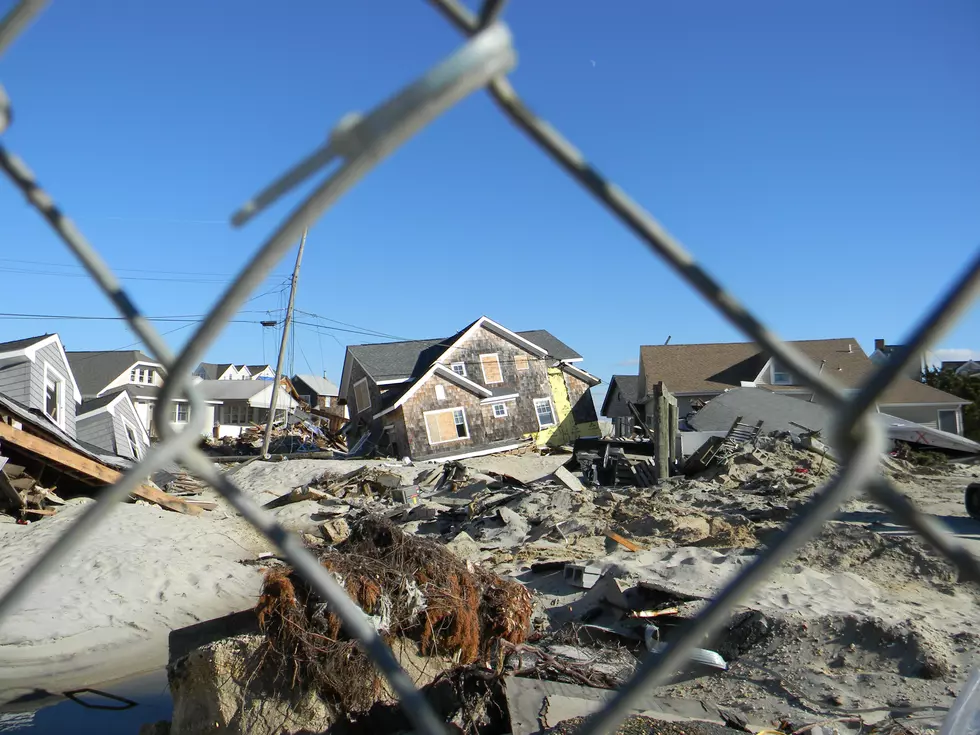
Shore Town Hard-Hit By Sandy Sees Taxes Rise
Waves of storm-relief aid helped some Jersey shore communities get through the first year after Superstorm Sandy without having to raise taxes to ruinous levels.
That aid has slowed, however, forcing some towns to increase municipal property taxes, though no Sandy-affected town has approved or proposed a drastic tax increase for this year.
Mantoloking, where nearly all of the 521 homes were damaged or destroyed by Sandy, passed a 2014 budget last week of $7.5 million in which the amount to be raised through taxes is up 31 percent from a year ago. The main reason, according to Councilman Steve Gillingham, is that some storm aid available last year is not being repeated at the same rate. Also, the borough actually lowered its tax rate last year due to the influx of temporary help.
"The storm resulted in some revenue that resulted in a one-year-only reduction last year," he said. "Last year, we were disproportionately down. ... This year, it's come back up."
For instance, a $831,074 disaster loan from the Federal Emergency Management Agency that helped last year's budget is not available this year. But Mantoloking expects higher reimbursements from FEMA for storm-related expenses this year.
Mantoloking's tax rate went from 20 cents per $100 of assessed value to 24 cents per $100. That means the average home in this wealthy barrier island enclave, assessed at nearly $2.2 million, will pay $5,269 in municipal taxes this year, up more than 31 percent from a year ago. That does not include school or county taxes, which account for the majority of New Jerseyans' tax bills.
But Gillingham noted that this year's budget brings Mantoloking back into line with what its finances were before the storm. He said the average municipal tax bill is just $72 more this year than it was in 2011.
Toms River, whose Ortley Beach section was devastated by the storm, anticipates getting $5 million less in federal and state storm recovery aid this year. That is one reason why its proposed municipal tax rate is rising by nearly 4 cents per $100 of assessed value. Municipal taxes on the average house would increase to $1,365 this year under the budget, which is to be adopted soon. That's an increase of more than 7 percent.
Township administrator Paul Shives noted that Ortley Beach lost $2 billion in taxable property because of Sandy. The town got $20.6 million in federal and state storm relief last year, which helped avoid a huge rise in taxes for properties that were not damaged in the storm.
Toms River has applied for $15.4 million in federal Community Development Block Grant funding, noting "we still need assistance this year." The town also incurred $1.2 million in snow removal costs that have to be paid for in the budget.
Seaside Heights, which relies on tourism income to fund most of its budget, is counting on a $2.4 million federal grant to keep its budget under control this year, but it is not certain that money will be approved.
Several other shore towns hit hard by Sandy seem to be faring better in their own budgets. Ocean City approved a $69.8 million budget, up 2.6 percent from last year, with a municipal tax increase of $73 on the average home, assessed at $500,000.
Sea Bright, which lost its entire downtown business district and hundreds of homes, is raising its municipal tax rate by 2 cents per $100. It is helped by what officials termed "significant amounts" of federal and state aid in the second year after the storm.
Taxes on the average home in Brick, whose oceanfront and lagoon communities suffered major damage in the storm, will increase by about $67 this year, helped by about $4 million in storm aid.
And Belmar's budget will keep its municipal tax rate unchanged for the fourth year in a row.
(Copyright 2014 The Associated Press. All rights reserved. This material may not be published, broadcast, rewritten or redistributed)
More From New Jersey 101.5 FM









